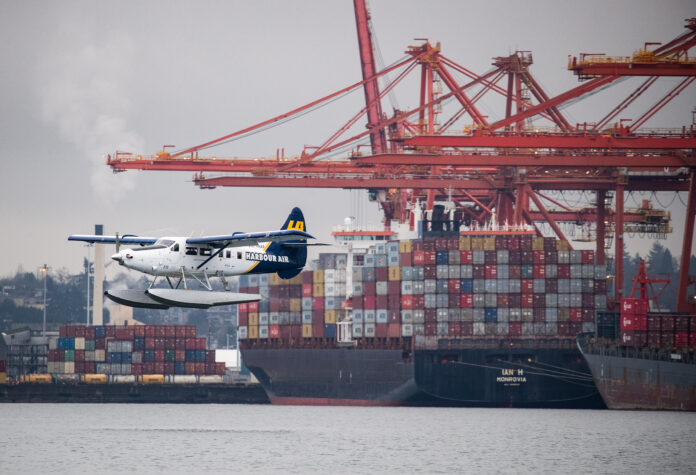Ottawa plans to spend more than a half-billion dollars to fix supply chain issues, but experts say it falls far short of the kind of comprehensive strategy needed to address longstanding problems.
Last week’s federal budget commits $603 million over five years to support transportation network upgrades such as port or rail expansions on top of the $4.2 billion allocated to the National Trade Corridors Fund since 2017.
Backed-up supply chains can lead to price hikes, product shortages and delays, affecting everything from semiconductors to cold cuts.
But large-scale infrastructure projects are pricey. A proposed container terminal at a Port of Vancouver site, for example, is estimated at $3 billion.
Ottawa last year announced a national infrastructure assessment that aims to lay out a long-term vision and boost co-ordination among infrastructure owners and funders over the next three decades.
Experts say that can’t come soon enough.
A breakdown of the 2022 federal budget
The extra money laid out in the budget is sure to help. But on top of more cash, what’s needed most is a cohesive approach to the overall flow of goods into and out of the country, says Carlo Dade, director of the Canada West Foundation’s trade and investment centre.
“The government’s kind of under the illusion that if they sign trade agreements, goods just get put on a magic carpet and somehow arrive in foreign markets,” he said in an interview.
“Yes, we need more money. But God help us, we have to be able to spend that money intelligently.”
The United States, European Union, Australia and Switzerland have overarching transport infrastructure strategies, the European Court of Auditors found last year. Canada does not.
Canada also placed 32nd in a World Economic Forum ranking of 141 countries’ transport networks in 2019, falling from 14th four years earlier.
Trending Stories
Johnny Depp vs. Amber Heard: Defamation trial gets ugly, fast
Elon Musk offering to buy Twitter for US$41 billion
Billions more are also needed to strengthen road and rail networks against extreme weather like the atmospheric rivers that washed out transport links in British Columbia last year, says John Gradek, a McGill University lecturer specializing in supply chains.
“This new round of money will help ports tweak their technology and improve efficiency. It might help twin some sections of highway. But it’s not building a new port. It’s not going to bore a hole through the Rockies to protect freight trains from washouts,” he said.
Full breakdown of the 2022 Federal budget
Stretches of the corridors operated by the Canadian Pacific and Canadian National railways hug the Fraser River east of Vancouver. Others snake through avalanche-prone areas or run along thin plateaus between the river and mountains.
“It was river bed erosion from flooding that carved out these spaces … so you were literally building on flood plains,” Gradek said. Calling the corridors “risky territory,” he said hefty infrastructure overhauls would involve topographical reviews followed by new routes.
Difficulties with congestion persist in hubs such as the Port of Vancouver, but capacity is not the only obstacle to freight traffic.
In winter, railroad operators have to reduce speeds and shorten train lengths because low temperatures impair the air-brake systems – a problem that demands a technological rather than a construction solution, said Jacques Roy, professor of transport management at HEC Montreal business school.
Reducing congestion in major cities, increasing access to ports and addressing labour shortages would all mark crucial steps toward smoother goods transport, a puzzle that requires action by multiple levels of government and draws on areas ranging from public transit to skills training and immigration.
The ongoing national infrastructure assessment as well as a supply chain task force established by Ottawa in January aim to put forward solutions. But past reports with similar goals have had mixed results.
The Canada Transportation Act review, completed in 2016 after two years of study and stakeholder consultations, highlighted potential actions to bolster the country’s economic health over the coming decades.
“Private sector companies provided data, they sat down for interviews, the report’s put out – and it was immediately shelved by the government,” Dade said.
Launched by Stephen Harper’s Conservative government, the review wasn’t finalized and submitted until after Justin Trudeau’s Liberals gained a majority. Transport Canada said when the report was tabled that its findings would be used to “inform the government’s activities, including the development of a long-term agenda for transportation in Canada.”
Previously, transportation experts mapped out a plan to build infrastructure and streamline trade rules under a 2008 policy report out of Western University related to the “Ontario-Quebec Continental Gateway and Trade Corridor,” a federal-provincial partnership.
That proposal called for a range of measures such as additional crossing capacity at border points, harmonized regulations between provinces and U.S. states, and the establishment of an agency to monitor results.
“There was a big show of interest and force and money was available. And then everything sort of collapsed over time,” Roy recalled. “I don’t know what happened. It just faded away.”
© 2022 The Canadian Press



